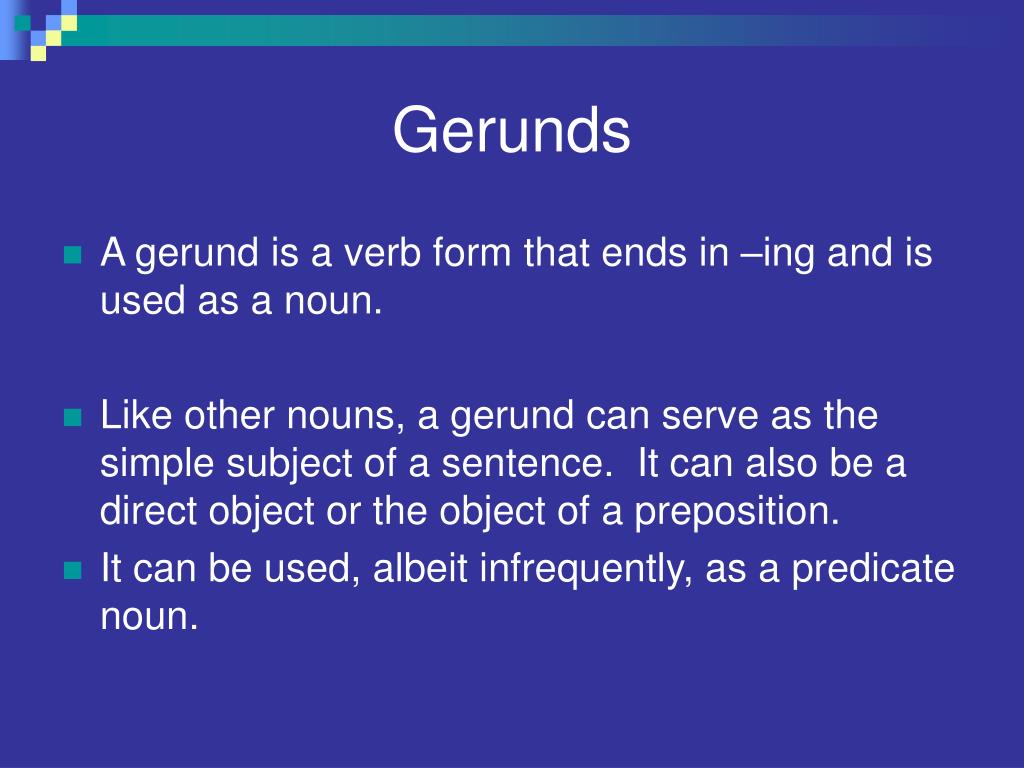

For example, some are present participles. Notwithstanding, not all ing words are gerunds. Gerunds are nouns created from a verb plus – ing. We recommend avoiding it to make sure you always express yourself as clearly as possible and never risk confusing your readers. Technical writers tend to use this structure.

We can correct the dangling gerund phrase by making the subject explicit: By being kinder to one another, we can make the world a better place. Examples of dangling gerund phrase constructions include “ By being kinder to one another, the world can be a better place,” and “ The world can be a better place by being kinder to one another.” In both examples, it’s not clear who can make the world a better place. Like a dangling modifier, dangling gerund phrases don’t clearly express who the subject of the sentence is. A gerund phrase is a phrase made up of a gerund plus any associated objects or modifiers.

In fact, both gerunds and gerund phrases can be objects, subjects, or predicate nominatives.ĭrinking too much water can be as harmful as drinking too little. Even though a gerund is made out of a verb, gerunds and entire gerund phrases actually behave like nouns. Similarly, a gerund phrase is a phrase made up of a gerund plus any associated objects or modifiers (Example: Eating an entire pizza…). What is a Gerund and Gerund Phrase?Ī gerund (pronounced jer-und) is a noun created by adding the ending – ing to a verb (Example: laughing). When used in a sentence, it acts as a noun. A gerund phrase has an object, modifier, or both. In this guide, we’ll show you what a gerund phrase is and how to use it best with plenty of easy examples. Gerund sounds like a foreign word, but gerunds are actually a common part of the English language - and so are gerund phrases. It’s best to avoid this construction because it may confuse your readers.


 0 kommentar(er)
0 kommentar(er)
